Bring Da Base
SONOS, makers of whole home wireless speakers, just entered a new speaker category: the sound base. A sound base or speaker base is a speaker that sits under your TV, replacing the TV's internal speakers for better sound quality without the need for a receiver or multiple speakers. And in keeping with the company's usual naming convention, the new speaker announced today is called the PlayBase (clever, right?).
You might ask why SONOS is offering such a product, since they're already doing a fairly brisk business with their identically priced sound bar, the PlayBar ($699). Well, according to their research, SONOS says that over 70% of TV buyers actually still put their sexy new flat panel or curved TV on a stand; fewer than 30% mount their TVs on the wall. And a soundbar doesn't always make the best fit for a stand-mounted TV.
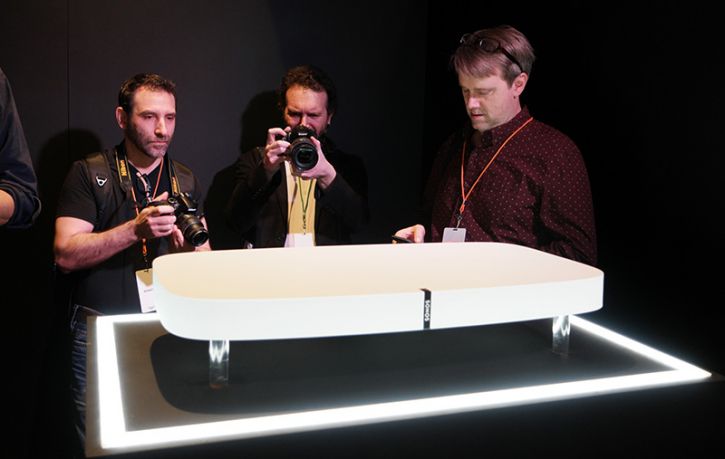
SONOS collected feedback (and photos) from customers who were using all kinds of creative placement and mounting solutions for their PlayBars, with results varying from the ingenious to the absurd. But it turns out things get a whole lot simpler when you design the speaker to go below the TV instead of in front of it or mounted on a wall. Simpler for the customer anyway, but not necessarily for SONOS.
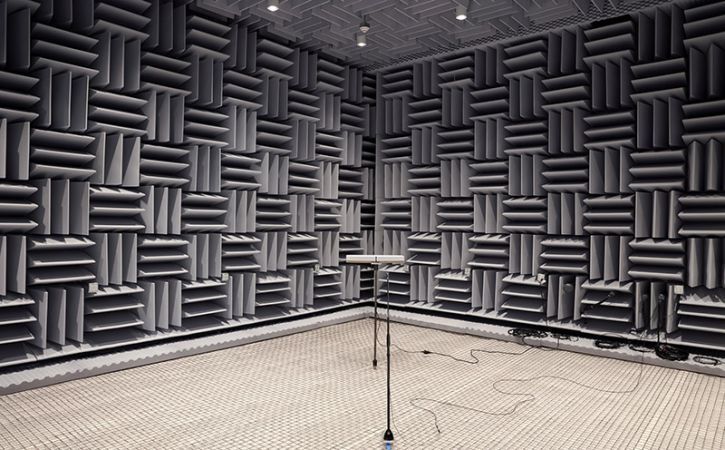
We visited the company's east coast Headquarters in Boston last month to see the new product's debut and spoke with the designers about what it took to make the PlayBase. From conception to release, the project took over three years. Apparently it's not easy to find the perfect size and shape to fit the great majority of flat panel TVs, with both enough structural integrity to support the TV and a slim enough profile to not draw too much attention to itself while still providing deep rich sound quality. But they've managed to pull it off with the PlayBase.
First of all, because of its WiFi requirement, the top and sides of the PlayBase had to be made of polycarbonate. Steel or aluminum might have been easier to work with, but would have killed the wireless reception. And no one likes buffering while trying to listen to music. Also, to get sound out of the unit, without the internal speakers being visible, SONOS has to drill 43,000 tiny holes in each cabinet, sized from 7 mm to 9mm in diameter, depending on which frequencies they needed to pass. Molding the lid with the holes in it would have been simpler, but would have led to anomolies in sound quality as the holes would not have been precisely shaped. But the results speak for themselves.
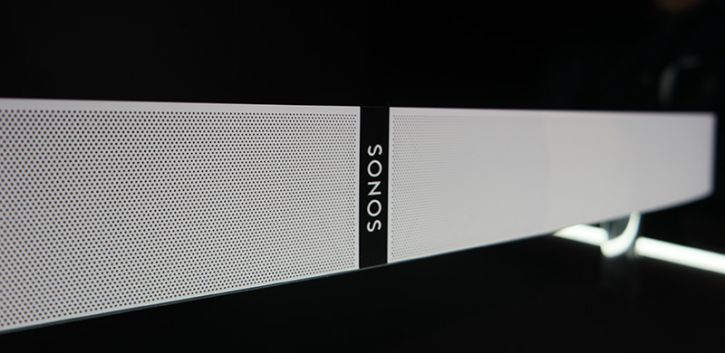
It's not often that I can close my eyes and forget that I'm listening to speakers, unless we're talking about super high-end flagship speakers and expensive electronics. But when listening to music on the PlayBase, I could hear the semblance of an actual three dimensional soundstage. Vocals were locked in the center, sounding natural and lifelike, while the instruments were spread across the front of the room, extending beyond the physical reaches of the PlayBase. The PlayBase features seven transducers with two side-firing tweeters. It uses advances processing including phase cancellation to widen the soundstage. And it can take advantage of SONOS "TruePlay" technology to compensate for less than perfect placement.
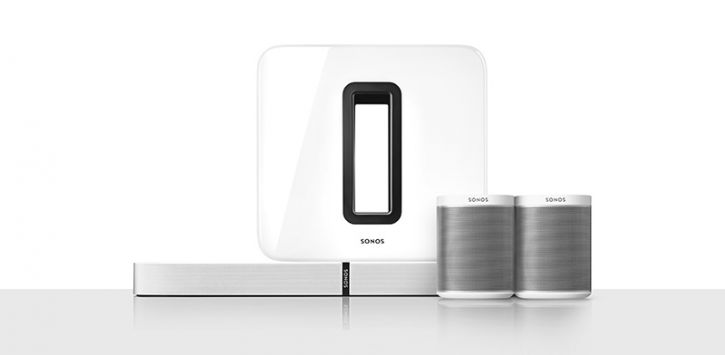
Even without the addition of a wireless subwoofer or rear speakers (both of which are optional with the PlayBase), the speaker itself offered a very dynamic and enjoyable alternative to the TV's built-in speakers. But the PlayBase is more than just a simple "TV speaker."
Built on the SONOS ecosystem, the PlayBase can play "virtually all the music on earth." The SONOS app supports all of the popular music streaming apps including Spotify, Apple Music, Amazon Prime, Pandora and TuneIn Radio. It even supports higher quality lossless streaming apps such as Deezer and Tidal. With Sonos, you can select any song, playlist or station from your subscribed music services, or select from your own digital music library if you have one. And you can route this music to the PlayBase as well as to any other SONOS speaker in your home. You can synch it up so that the same music plays everywhere in your home, or select different music for different rooms.
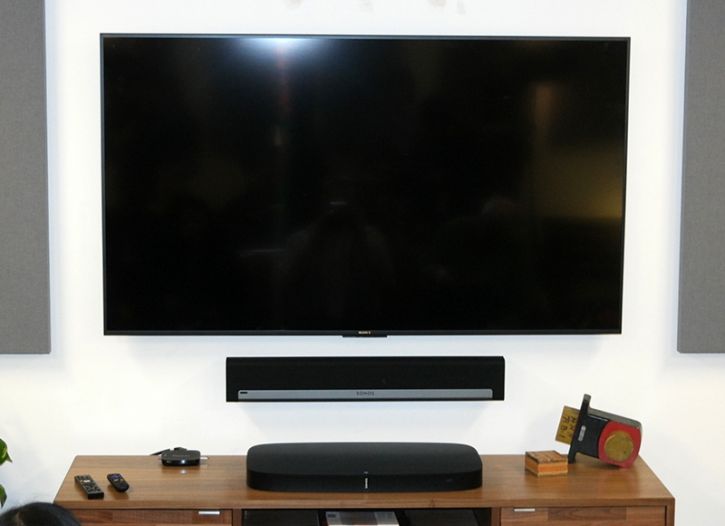
As with the PlayBar, the PlayBase only has a single input: a fiberoptic digital input which takes the fiberoptic output that you find on the back of most TVs. When it detects sound from that fiberoptic cable (i.e., when your TV is on), the PlayBase automatically fires up and starts playing the TV sound. You can adjust volume in the Sonos app or you can program the PlayBase to respond to your original TV or cable box remote as well. If you decide you want to listen to music instead (even while the TV is on), you can choose a playlist or app, right from the SONOS mobile app.
For movie-watching, the PlayBase does a pretty good job of conveying the dynamics of most films, with decent bass extension and clear articulate dialog. But it is limited in really deep bass reproduction and in its surround sound capabilities. But there's a solution for that: just throw more money at it. For an extra $699, you can add the dedicated Sonos Sub subwoofer, and for another $400, you can add a pair of Play:1 speakers as wireless rear speakers. With these add-ons, the PlayBase can create a really exciting surround sound system and does reproduce true 5.1-channel surround sound. Of course, getting that discrete 5.1 sound to the PlayBase isn't always an easy task, but you can read our tutorial on how to get 5.1 sound from the SONOS PlayBar (the same tips apply to the PlayBase).
Big Sound Without All The Fuss?
Overall, I was impressed by what I saw and heard from the PlayBase. As a standalone TV speaker solution, it's a bit expensive, though it does offer higher than average sound quality for that. But as a gateway to wireless whole home music and "listening out loud" it is definitely worth the price of admission. The SONOS PlayBase will begin shipping on April 4, 2017 for $699. Current SONOS owners can pre-order the PlayBase starting today on SONOS.com.
Related Articles: